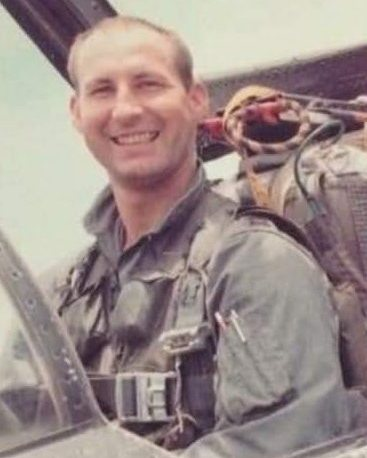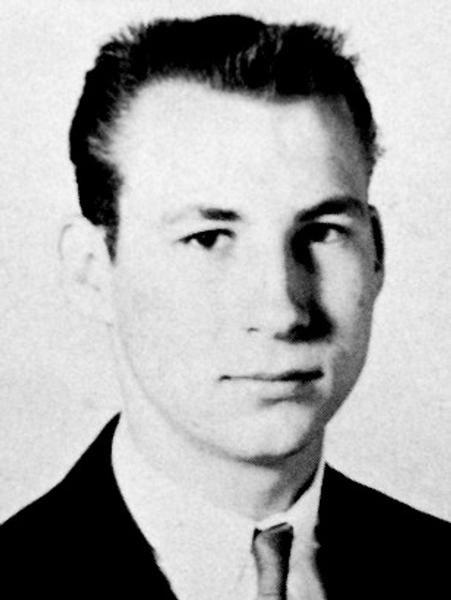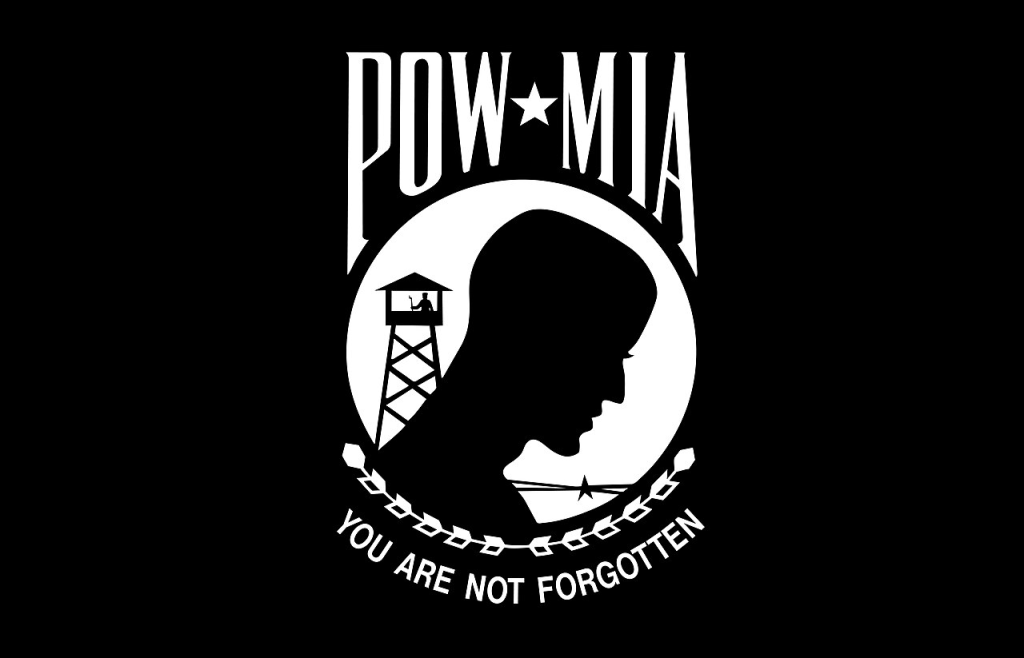Captain Wade Anthony Greer: United States Air Force
“He vanished from the skies over Khanh Hoa, but his courage remains — a Texas airman who gave everything for duty and country.”
November 5, 2025

 Captain Wade Anthony Greer
Captain Wade Anthony Greer
United States Air Force
Born: March 29, 1943 – Nacogdoches, Texas
Died: November 5, 1969 – Khanh Hoa Province, South Vietnam
Entered Service: Regular Military
Status: Non-Hostile – Died While Missing (Air Loss, Fixed Wing – Crew)
Decorations: ★ Air Medal ★ National Defense Service Medal ★ Vietnam Service Medal ★ Republic of Vietnam Campaign Medal
The Making of an Airman
In the pine-covered hills of East Texas lies the small town of Nacogdoches — a place where neighbors knew one another, where the sound of a church bell carried across town, and where a boy named Wade Anthony Greer grew up believing that service to something larger than oneself was the highest calling. Born on March 29, 1943, Wade came of age in the shadow of the Korean War, during a period when jet aircraft and the promise of the “new frontier” of flight captured the imagination of a generation.
From an early age, Wade was fascinated by the freedom of the skies. Those who knew him remembered a thoughtful, steady young man — quick to smile, serious when it mattered, and quietly determined. Like many of his peers in small-town Texas, he found himself drawn to the discipline, purpose, and adventure that the United States Air Force offered. It wasn’t simply about flying; it was about belonging to something that mattered — a brotherhood defined by courage, precision, and sacrifice.
After completing his education, Wade Greer entered the Air Force through Regular Military service — meaning he didn’t wait for a draft or an obligation. He chose to serve. It was a decision born of conviction and shaped by a sense of responsibility to his country during one of the most turbulent decades in American history.
The War in the Skies
By the time Captain Greer earned his commission and wings, the conflict in Southeast Asia had escalated into one of the largest air wars ever fought. Vietnam was a war unlike any other — a place where politics blurred with survival, where the invisible enemy lurked in the jungles below, and where American pilots often faced not only hostile fire but terrain, weather, and the constant uncertainty of returning home.
Air Force crews flew everything from nimble forward air controllers and reconnaissance planes to heavily armed gunships and transport aircraft delivering vital supplies. Each mission carried risk. There were no “routine flights” in Vietnam — every sortie was a thread in the vast and dangerous web of operations that kept men alive on the ground.
Captain Greer’s duty placed him among those who understood that reality better than most. Every takeoff was a contract with fate. Every landing was a victory.
November 5, 1969 – The Mission Over Khanh Hoa
On November 5, 1969, Captain Wade Anthony Greer was part of an Air Force mission flying over Khanh Hoa Province in the coastal region of South Vietnam. The area, known for its rugged hills and narrow valleys leading to the South China Sea, was often treacherous for aviators. Sudden changes in weather, mechanical failure, or disorientation in poor visibility could turn a flight from routine to catastrophic in seconds.
That day, Captain Greer’s aircraft — a fixed-wing Air Force plane — went down under what was later determined to be non-hostile circumstances. Whether it was engine failure, loss of control, or the hidden dangers of the terrain, the details remain partly lost to time. What is known is that his aircraft disappeared somewhere over the province, and immediate recovery efforts yielded no sign of the plane or its crew.
Search and rescue teams were launched. For days, other pilots risked their lives combing the area — navigating the same mountains and low clouds that had likely claimed the aircraft. But the dense jungle canopy concealed all traces. No parachute flares. No radio calls. No wreckage.
For those who served with him, the silence that followed was unbearable. In the Air Force, camaraderie runs deep; every man in the sky depends on another. When one went missing, the entire unit felt it as a wound that didn’t close.
The Long Silence – Missing in Action
In the official reports that followed, Captain Greer was listed as Missing in Action — one of thousands of American servicemen whose fates were uncertain in the chaos of the Vietnam War. To his family back in Texas, that status brought both hope and torment. Missing meant not gone, not yet. It meant that maybe — somehow — he could still come home.
Families of MIA servicemen lived in a strange kind of suspended grief. Without remains, without answers, closure was impossible. The war ended for most Americans when the last helicopters lifted off from Saigon in 1975 — but for families like the Greers, it never truly ended. They waited through the years as teams searched jungles, riverbeds, and remote valleys. They answered official letters, kept his photograph framed, and prayed that someday someone would find him.
Those early postwar years saw joint recovery efforts between the U.S. and Vietnamese governments expand — investigators trekking through the countryside, guided by villagers, cross-referencing old flight paths with newly uncovered crash sites. For many families, including Captain Greer’s, these missions were acts of quiet heroism in their own right: archaeologists of remembrance, uncovering fragments of aluminum and human courage lost to time.
Declared Dead While Missing
Eventually, after exhaustive investigation and the passage of time, Captain Wade Anthony Greer was formally declared dead while missing. It was a necessary administrative closure, but it brought little comfort. Official words could not fill the absence left by a son, a friend, a fellow airman who had vanished into the jungled mountains of Khanh Hoa.
His name joined those etched into the black granite of the Vietnam Veterans Memorial in Washington, D.C. — a long, solemn wall that holds more than 58,000 stories of sacrifice. For visitors who find his name there, the simple inscription “Wade A. Greer” stands as a reminder that every one of those names once belonged to someone who laughed, dreamed, and loved — and who answered when the nation called.
Remembering a Texas Airman
In Nacogdoches County, the memory of Captain Wade Greer endured. His story became part of the tapestry of local history — a thread woven among the many East Texans who wore the uniform during Vietnam. The town, steeped in heritage and resilience, has never forgotten its sons who did not return.
For many veterans who survived the war, remembrance of men like Greer became sacred duty. They carried his memory into reunions, ceremonies, and quiet moments when they looked skyward. They knew what it meant to risk everything for the man next to you — and what it cost when one didn’t make it home.
Symbols of Service
Captain Greer’s decorations tell part of his story — but medals only hint at the deeper truth behind them.
The Air Medal, awarded for meritorious achievement while participating in aerial flight, speaks to his skill and courage in the skies. Each ribbon represents not a single act, but a pattern of valor repeated mission after mission.
The National Defense Service Medal marks his willingness to serve during a time of national crisis, while the Vietnam Service Medal and Republic of Vietnam Campaign Medal recognize his role in one of the most demanding air campaigns in modern military history.
Yet the greatest decoration is the legacy he left — a legacy of dedication, professionalism, and sacrifice that continues to inspire those who serve today.
The Cost of Duty
When Americans speak of “the cost of war,” they often think in terms of numbers — casualties, sorties, statistics. But for every pilot like Captain Wade Greer, the cost was personal and profound. He was not a number; he was a young man from Texas who believed that freedom required defenders. He took that belief into the cockpit and never came back.
For the Air Force, his loss — like so many others — was felt in the quiet rituals that followed. The empty chair in the squadron ready room. The folded flag presented to family. The moment of silence before the next briefing. The mission had to continue, even as his comrades carried the weight of his absence.
The Ghosts Who Still Fly
Today, decades after that November day in 1969, the story of Captain Wade Anthony Greer resonates beyond the war itself. His disappearance represents not just one man’s fate, but the larger story of all those still missing from Vietnam — the “ghosts who still fly,” as some veterans call them. Their memories linger in cockpit checklists, in old photographs, and in the stories told at reunions where fewer and fewer gather each year.
At museums and memorials across the country — including Ghosts of the Battlefield — their artifacts, names, and photographs ensure that they remain part of our national conscience. To remember them is to keep faith with every generation that has stood the watch before us.
Legacy and Reflection
Captain Wade Greer’s life embodies the spirit of quiet heroism that defined America’s airmen in Vietnam. They were not driven by fame or recognition. They flew because they were called, and they accepted the risks because they believed in the mission and in each other.
In remembering him, we remember them all — the pilots, navigators, gunners, and crewmen who took to the air over a distant land and faced both enemy fire and the unforgiving realities of flight in wartime conditions. Their service reminds us that freedom is not maintained by words alone but by the actions of those willing to place themselves between danger and home.
More than half a century later, Captain Wade Anthony Greer remains part of that lineage. Though he vanished from the skies over Khanh Hoa, his courage did not fade. It endures in the collective memory of a grateful nation and in the quiet pride of the community that raised him.
Epilogue: The Enduring Light
There is a tradition among aviators — when a pilot goes missing, others keep a light burning. It’s a gesture of hope, a symbol that no one is forgotten. For Captain Wade Greer, that light still burns. It glows in the hearts of those who read his name, in the ceremonies held each Memorial Day and Veterans Day, and in the stories passed down to new generations who might never know his face, but who can feel the weight of his sacrifice.
He is remembered not for how he died, but for how he lived — with courage, conviction, and an unyielding belief in the purpose of his mission.
And though his final resting place may lie somewhere beyond the reach of human eyes, his spirit soars eternally among the clouds he once called home.
 Captain Wade Anthony Greer
Captain Wade Anthony Greer